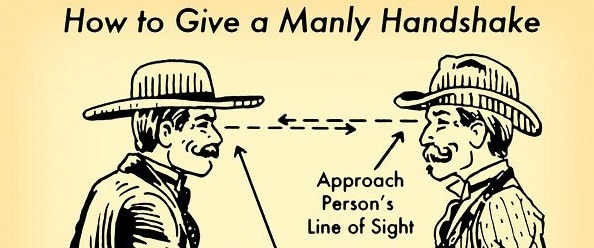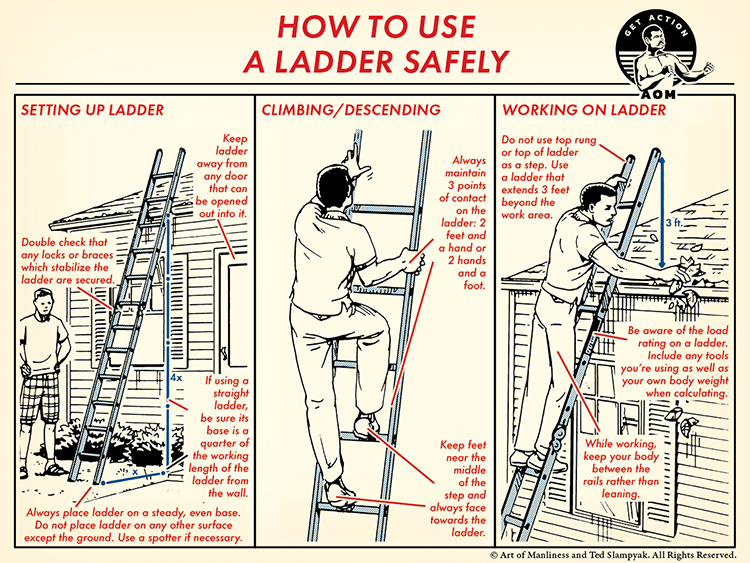
“Show me a man with a tattoo and I’ll show you a man with an interesting past.” –Jack London
Tattoos. Few art forms have such a long history, and even fewer evoke such a broad spectrum of opinions. Revered by some as a sign of honor or distinction, by others as an outward expression of creativity and personality, and by others still as the mark of criminals and lowlifes, the perceptions of tattooing are vast indeed. Perhaps you are considering getting a tattoo in the near future. After all, most men have kicked around the idea at one point or another. While a great deal of information involving tattoos is subjective (design styles, coloring, size and visibility), one thing is certain: the better informed you are, the better your experience and final result will be. Let’s take a deeper look into the ancient art.
Tattoos Throughout History
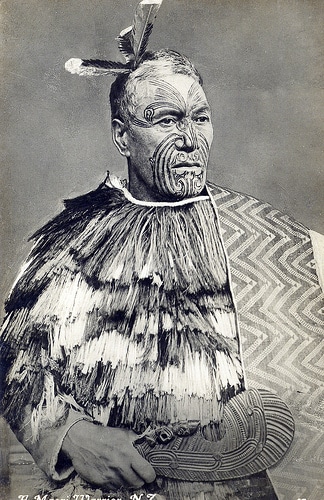 Archaeological evidence from around the globe has confirmed tattooing to be one of the oldest forms of art and self-expression. Tattooing has been practiced either as decoration, as a mark of high station, or for healing or protective purposes throughout the history of mankind. From Neolithic ice men to Polynesian Maori warriors to the guy in front of you in line at the grocery store, tattoos have become a timeless art form that knows no cultural boundaries.
Archaeological evidence from around the globe has confirmed tattooing to be one of the oldest forms of art and self-expression. Tattooing has been practiced either as decoration, as a mark of high station, or for healing or protective purposes throughout the history of mankind. From Neolithic ice men to Polynesian Maori warriors to the guy in front of you in line at the grocery store, tattoos have become a timeless art form that knows no cultural boundaries.
“Not one great country can be named, from the polar regions in the north to New Zealand in the south, in which the aborigines do not tattoo themselves.” –Charles Darwin, The Descent of Man
While many cultures throughout history are known for their prominent tattoos, such as the ancient Picts of modern day Scotland, the culture most widely associated with tattooing is the Maori of Polynesia. Indeed, the word “tattoo” originates from the Maori word “tatau,” meaning to mark. The Maori people practice two different yet easily confused forms of bodily modification, the tattoo as we know it, and another form of tattoo known as Tā moko. Unlike common tattooing, which repetitively punctures the skin while embedding ink for color, Tā moko involves the literal carving of the skin using a chisel known as uhi. This process leaves permanent grooves on the surface of the skin (usually the face, buttocks and upper legs), giving the tattoo a unique texture. Such marks were a sign of honor in pre-European Maori society, to the extent that those who did not have them were considered to be of a lower class.
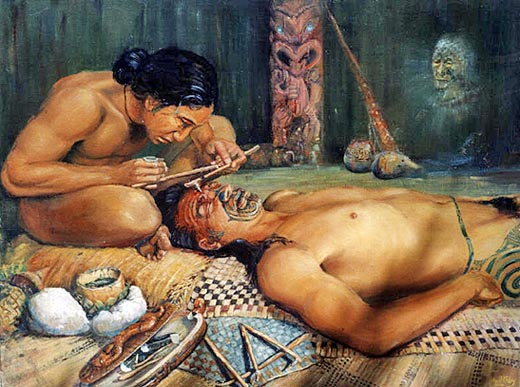
“The marks in general are spirals drawn with great nicety and even elegance. One side corresponds with the other. The marks on the body resemble foliage in old chased ornaments, convolutions of filigree work, but in these they have such a luxury of forms that of a hundred which at first appeared exactly the same, no two were formed alike on close examination.” -Captain James Cook, on the Maori Tā moko
It was Maori influence that most likely led to the popularity of tattooing among sailors, which has continued well into modern times. Captain Cook’s men, like all travelers, were always on the lookout for artifacts and mementos of their travels. And what better way to bring home a bit of the exotic than by taking the marks of the native culture you had encountered on your trip? Tattoos blended well with the freewheeling culture aboard ship and the life of a sailor in those days, and the tradition quickly took hold.
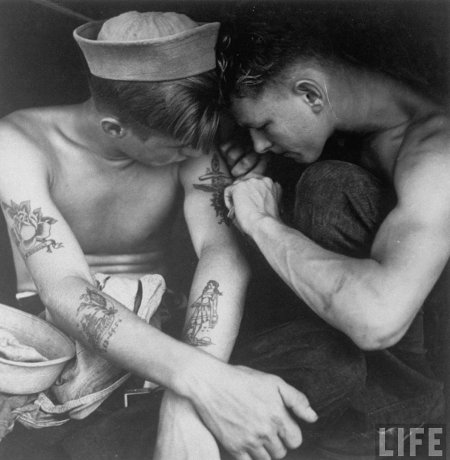
“A sailor without a tattoo is like a ship without grog: not seaworthy.” –Samuel O’Reilly, tattooist
As the practice grew in popularity, tattooing among seamen took on its own unique characteristics. Whereas the Maori and other cultures used tattooing to signify one’s standing in society, sailors used the art form to mark various seafaring accomplishments and to invoke good fortune. For example, a tattoo of a turtle would mark a man who had sailed across the equator. A fully rigged ship represented a sailor who had made passage around the treacherous Cape Horn. The ever popular anchor represented a man who had sailed the Atlantic. Other tattoos, such as a pig on the top of one foot and a rooster on the top of the other, were said to protect the sailor from drowning; since neither animal can swim, they would help the sailor find dry land as quickly as possible.
Tattoo Taboo
Sailors historically had a reputation for being quite rough around the edges, and so the tattoo’s popularity with seafarers helped secure its reputation as something practiced by those on the fringes of society. This was true in other cultures as well.
Tattoos became so widely associated with criminal activity in 19th century Japan, for example, that the practice was outlawed completely and remained that way until the mid 20th century. This was a direct result of the popularity of tattoos among the Yakuza, Japan’s organized crime syndicate, who are clearly identified by prominent, often full body tattoos made in the traditional Japanese style known as Tebori. Unlike machine-drawn tattoos, Tebori involves the use of multiple large hand-held needles and a steady artist’s hand, resulting in more artist control of fading and coloring.
While tattooing has surged in popularity in American society over the last few decades, the art form is still considered taboo by many who continue to associate it with gang culture, prison life, and various off-putting subcultures. That being said, the negative connotation around tattooing is slowly fading as the idea of the human body as a canvas once again moves into the mainstream. In fact, tattoos have become so common — there are probably fewer celebrities and professional athletes who don’t have a tattoo than do — that for some, they have lost their appeal as marks of real rebellion.
Tattoos may now be much more mainstream, but they should never be something a man rushes into getting. So let’s take a look at just what you should know before you consider going under the needle, and what to expect when you do.
Think Before You Ink
We can skip the “it’ll be there foreeeeever” line that you have probably heard from most everyone you shared your tattoo plans with. You’re a big boy, and you can make this decision for yourself. The worst case scenario is that you will have a permanent reminder to make well-informed and wise decisions in the future (in the form of barbed wire around your bicep). My recommendation to you regarding the choice to tattoo is this: If you’re going to get a tattoo, pick out your design, make sure it is original and has personal meaning, and then wait a year. Thank God I didn’t get some of the tattoos I wanted so badly in my late teens and early twenties. Usually, within a few months of having my heart set on a certain design, I was bored with it and had moved on to something else. When I finally found a design that I loved and knew I was comfortable with having on my body the rest of my life, I still sat on it for months before making my appointment to get it done. Remember, tattooing is a timeless art form. If you are in a hurry to get it done, you probably are not in the right frame of mind to get the most out of the experience.
As a more practical note, really consider where on your body the tattoo is going to go. Odds are, no matter how much you think to the contrary, you will want to cover your tattoo up at some point. Maybe it will be the first time you meet the father of the love of your life, or land a big job interview, or something else totally unexpected, but you will almost certainly want to have the option to cover it up. That being said, go ahead and rule out Mike Tyson-esque facial tattoos, and pretty much anything else you can’t cover up with your standard dress shirt and slacks.
Finding the Right Design
First, a thought on the design of your tattoo…BE ORIGINAL. There is nothing worse than unoriginal tattoos. With that in mind, avoid the flip boards full of tattoo ideas at all costs. They are nothing more than a compendium of tattoos that other people already have. The goal of tattooing (at least in modern Western society) is to express yourself. If the best expression of yourself is something you found on a flip board, you might want to do a little more soul searching before going under the needle. Of course, if your tattoo is signifying something important in your life, such as your unit in the military, you’ll likely want to stick to the design the others in your unit have as well.
An excellent example of originality blended with personal history is a tattoo a close friend of mine, Dave Forest, recently had done. Dave, who tragically lost two grandfathers to suicide in his childhood, wanted a tattoo that commemorated both the time he spent and the time he lost with them. After consulting with a local artist, he finalized a design which so clearly symbolizes his time with them cut short:
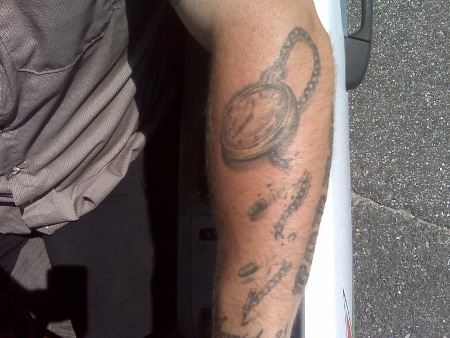 My own first tattoo had significant personal meaning as well. I knew that I wanted to get a tattoo done in Scotland, to commemorate the year I spent living there in graduate school. So for me, it is not only what the tattoo is, but where I got it that is significant. I designed a tattoo of the word “If” as a reminder of the Rudyard Kipling poem of the same name, in which Kipling invokes the virtue of stoicism and a “stiff upper lip” among men. Kipling’s words in “If” always struck a deep, resonant chord with me, and I wanted a permanent reminder that they were words to live by.
My own first tattoo had significant personal meaning as well. I knew that I wanted to get a tattoo done in Scotland, to commemorate the year I spent living there in graduate school. So for me, it is not only what the tattoo is, but where I got it that is significant. I designed a tattoo of the word “If” as a reminder of the Rudyard Kipling poem of the same name, in which Kipling invokes the virtue of stoicism and a “stiff upper lip” among men. Kipling’s words in “If” always struck a deep, resonant chord with me, and I wanted a permanent reminder that they were words to live by.

Doing Your Research
First of all, don’t even consider getting a tattoo anywhere except a clean, reputable tattoo shop. Remember, the tattoo you will get in some stranger’s basement will be permanent. So will the Hepatitis C you contract from his dirty equipment. A clean shop should have several sanitary measures in place to ensure a safe procedure. For example, artists should be gloved and needles should be new and taken out of a sealed package right in front of the client. Inks and any other equipment should also be new. All needles should be run through an autoclave, an equipment cleaning machine which utilizes steam and pressure to sterilize equipment. The work area will likely be separated from the shop and should be sanitized after every use.
Finding a good shop is just the beginning, however. Just as important to the quality of your tattoo is finding the right tattoo artist. Not all tattoo artists are alike. Most experienced artists will be capable of tattooing in multiple styles, but they will most likely have a specialization such as photorealistic work, vibrant coloration, or a certain cultural style. Make sure your artist understands exactly what you want and is capable of bringing it to life just like you imagined it.
Next, figure out what this is going to cost you. If you want a quality tattoo, you better be ready to pay for it. Depending on size and level of detail, tattoos can range from a 30-minute sit-down to several multi-hour sessions. Most artists will give you an upfront estimate, though this may need to be adjusted as the work progresses for larger tattoos. Remember that you are essentially hiring an artist to create a unique work of art for you, so be prepared to pay accordingly. A tattoo is not something you should bargain shop for. As the sign in one of my local shops notes, “Good tattoos aren’t cheap, and cheap tattoos aren’t good.” Also, it is customary to tip your artist, with a range of between 10-20% being a good standard depending on your satisfaction with their service.
Finally, find out what is included in the price. Will you be given a tattoo care kit, or will that have to be purchased separately? Most importantly and often overlooked, find out if touch-ups are included in the price. Often as a tattoo heals it will fade slightly, or uneven shading will appear during the healing process. Many shops will include free touch-ups down the road on any work they have done. It’s the tattoo equivalent of a powertrain warranty.
The Tattooing Process – What to Expect
We’ll offer just a brief outline of what to expect here, since the artist should orient you with the process in more detail before you get started.
The tattooing process involves several steps.
First, the artist may put what amounts to a temporary tattoo on you using a stencil made from transfer paper and a thermal printer. This will allow you to confirm the precise location and angle of your design, and will give the artist a basic template to work with. Now, let the tattooing commence.
The first needlework will be the outline, which will be done using a tattoo gun loaded with a liner needle and thin ink. Because a liner needle covers less surface area, this will be the sharpest pain you experience, particularly over sensitive or boney areas. Once the outline is completed, and following a soap and water rinse, the artist will begin to work on shading the tattoo. Depending on the design, the artist will likely use shading needles (multiple needles known as magnum needles) which deliver more ink to a larger surface area on contact. With the shading complete, any necessary color is added by way of shading needles as well.
With the tattoo completely inked, the area will be cleaned with soap and water, patted (not rubbed!) dry and covered with a sterile bandage. You can expect the tattoo to bleed slightly during and immediately after the process, so don’t be alarmed later when you remove the bandage and find a little blood or ink soaked into it. Over the next several days, you should apply a very small amount of antibacterial ointment to the tattoo to ward off infection and keep the area clean. You can expect redness, irritation, and a little swelling, but keep an eye out for more serious signs of infection. If there is any indication of infection, call a doctor without delay. Healing time will vary from person to person, but you should expect to wait about two weeks before exposing it to significant sun, salt water, or other abrasive elements.
Have a tattoo? Have twenty tattoos? Tell us about your experience in the comments below. Or better yet, show off your ink in the Tattoos Group in the AoM Community.




